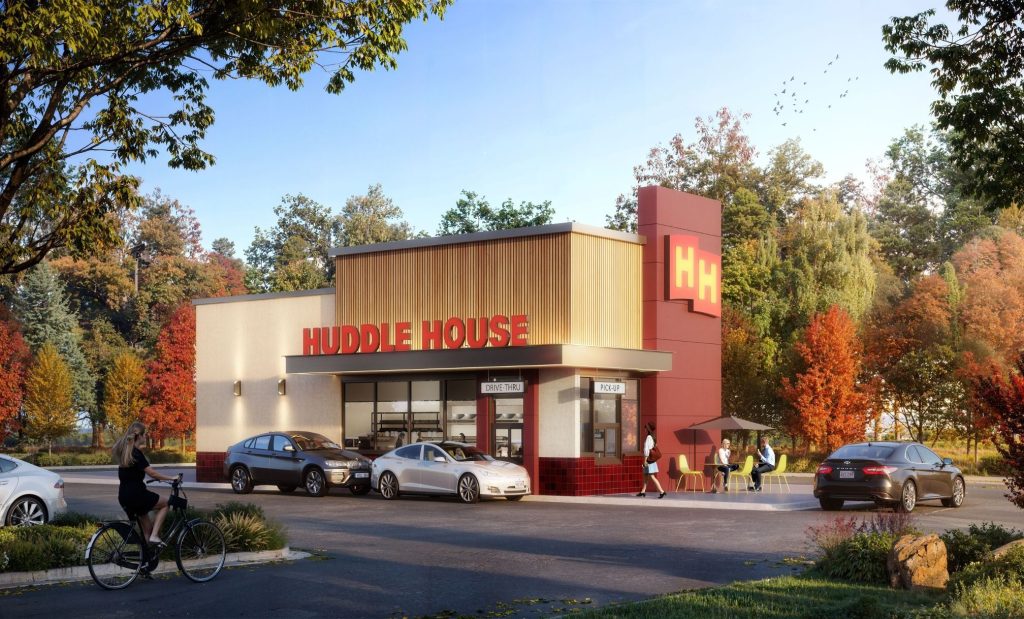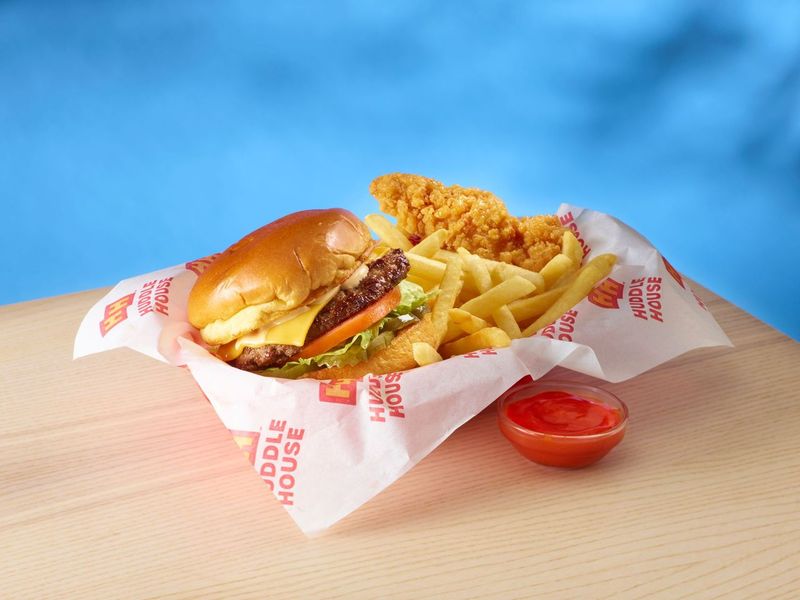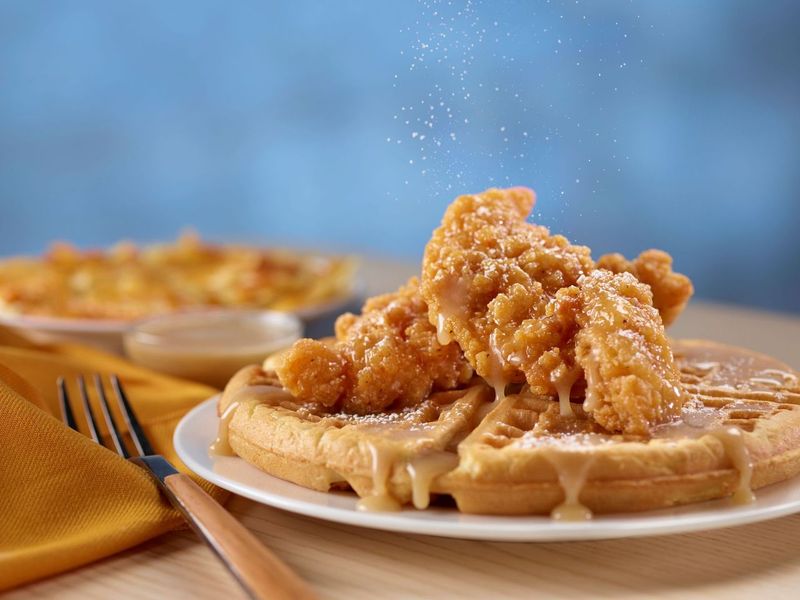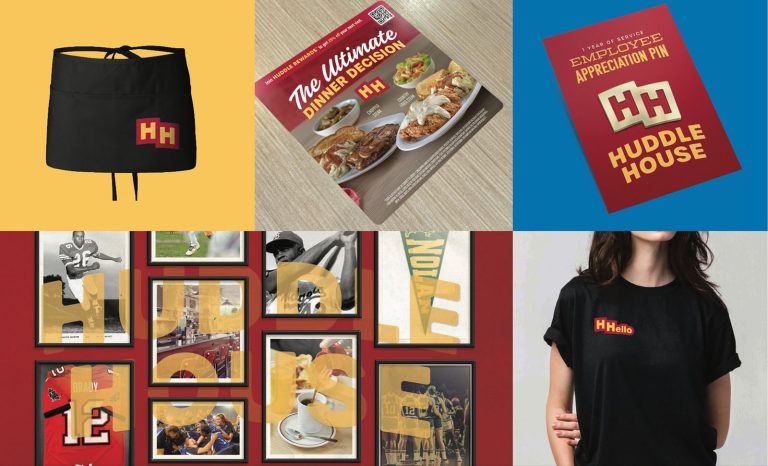For six decades, Huddle House has been a staple of small-town America, beloved for its Southern comfort food and come-as-you-are atmosphere. But even an iconic brand must evolve to thrive in a rapidly changing dining landscape. That’s why Huddle House is embracing a sweeping brand renovation aimed at captivating a new generation while honoring its storied past.
From reimagined store designs to updated menu offerings and a revitalized identity, the transformation goes beyond surface-level tweaks. It’s a strategic playbook for how legacy brands can remain relevant, engaging, and primed for growth.
Blending Nostalgia with Next-Gen Dining
At the heart of Huddle House’s evolution is a carefully curated brand refresh. Designed strategically to build on the brand’s 60 years of equity while shedding dated perceptions. The chain’s updated logo, which features a sleek modern take on the classic “HH” waffle imprint, is emblematic of this approach. It’s a nod to history, wrapped in a forward-looking aesthetic. Paired with the new tagline, “Bring it in,” the message is clear: Huddle House still stands for warmth and connection; but now with an energized, contemporary vibe.
“This new chapter, driven by extensive customer research and a refined brand positioning, reflects our commitment to meet the needs of today’s diners while staying true to our core values,” said James O’Reilly, CEO of Ascent Hospitality Management, Huddle House’s parent company.
Importantly, the brand went all-in on this transformation, revamping every single guest-facing element, from menus and signage to advertising and packaging. The overhaul was comprehensive, signaling that this isn’t just a cosmetic update but a fundamental realignment of the brand for long-term growth.
Building the Future: Store Prototypes with Purpose
A major hallmark of Huddle House’s renovation is the introduction of three new restaurant prototypes, each designed to unlock new markets and meet guests where they are. Whether that’s on a bustling college campus, in a suburban drive-thru lane, or along a highway travel center.

The designs, led by Studio 11 Design, strike a balance between heritage and modern. The QSR conversion format is tailored for urban and suburban locations and emphasizes drive-thru and walk-up ordering, with a portable menu of burgers, waffle tacos, and burritos. Meanwhile, the non-traditional model compresses the concept into high-traffic venues like airports and malls, maximizing convenience with a 500 to 1,200 square foot footprint.
“Our new assets will be more welcoming, higher-tech, more off-premise centric, and will feature Huddle House classics, and our new / evolved menu platforms,” said Blain Shortreed, COO of Ascent Hospitality.

These formats don’t just modernize the guest experience they reflect a broader trend in family dining: flexibility. By designing for different spaces and guest expectations, Huddle House isn’t just refreshing its image; it’s future-proofing its business.
Elevating the Menu with Familiar Innovation
A brand facelift wouldn’t be complete without what matters most: the food. Huddle House is introducing upgraded versions of its core favorites alongside bold new items designed to attract younger, flavor-seeking diners. Think crispy crinkle fries, Southern Country Biscuits, juicy Chicken Tenders, and a reimagined Smashed Huddle Burger served on a buttery potato bun.
The innovation isn’t just for show. It’s rooted in over 18 months of development and guest testing. These menu changes reflect a deliberate “Innovate – Elevate – Communicate” strategy that, according to VP of Marketing Stephanie Mattingly, will continue to shape future offerings.
“It’s about celebrating what makes Huddle House special while inviting everyone to taste the exciting future of our brand,” said Mattingly.


Flavor-Forward: Meeting the Palate of a New Generation
Huddle House’s menu transformation is not just about updating classics but about aligning with the evolving tastes of younger, flavor-seeking diners. This demographic is increasingly drawn to bold, unique, and globally inspired flavors. According to a 2024 report from Innova Market Insights, one-third of global consumers actively seek out new and different flavor experiences, with Gen Z in particular valuing food creativity significantly more than baby boomers (Institute of Food Technologists, IFT.org, October 2024).
This trend is also playing out in the rise of unexpected flavor pairings and mashups. As reported by the New York Post, Gen Z is embracing “swalty” flavor profiles—sweet and salty combinations—as the next big thing in food, replacing the now-familiar “swicy” (sweet and spicy) trend (New York Post, November 22, 2024). Food media, including Fast Company and Food & Wine, have also noted the surge in “crazy” or unconventional flavor combinations as a key strategy for brands targeting younger consumers.
Huddle House’s introduction of items like the Smashed Huddle Burger, Southern Sausage Overload Breakfast Burrito, and Maple Butter Chicken & Waffle speaks directly to this palate evolution. These dishes reflect a modern twist on comfort food, offering the boldness and portability that younger guests crave, without straying from the brand’s roots.
Guest-Centric Growth
So far, the renovation is yielding results. According to 2024 Blackbox Intelligence, Huddle House leads the family dining category in guest sentiment. According to a recent press release from Huddle House, this guest enthusiasm is matched by a record-breaking wave of new franchise development signings, setting the stage for expansion in 2025 and beyond.
“We’re elevating every touchpoint for our guests, from the food on their plates to the way they feel when they walk through our doors,” said Shortreed.
With nearly 300 locations open or in development, the revitalized Huddle House is performing a brand renovation that honors tradition while boldly stepping into the future.


